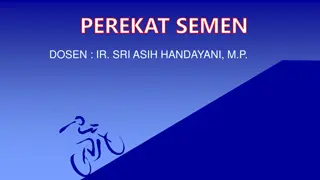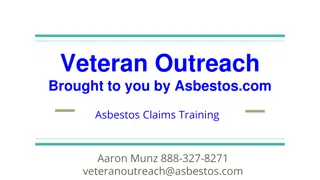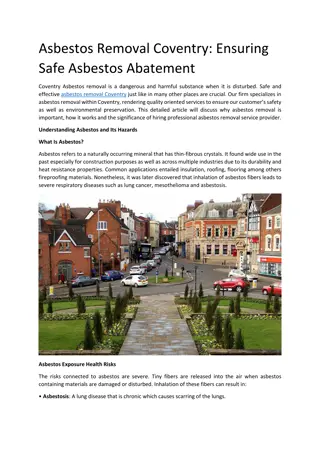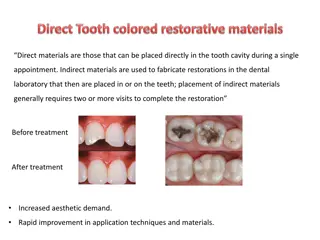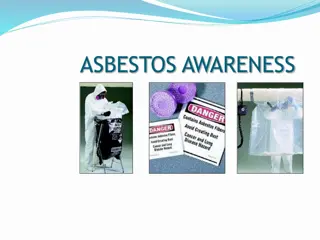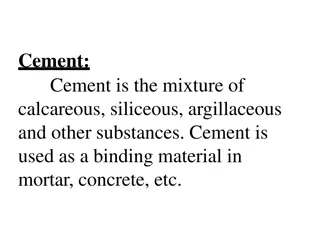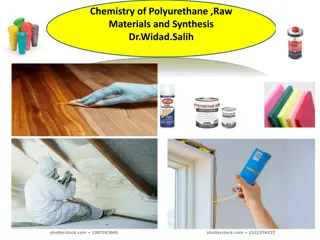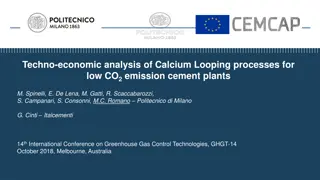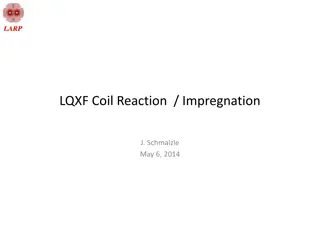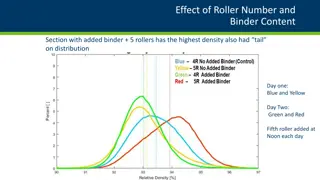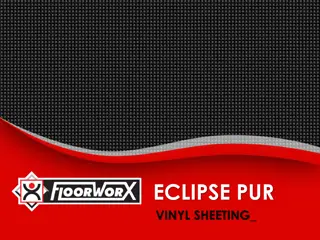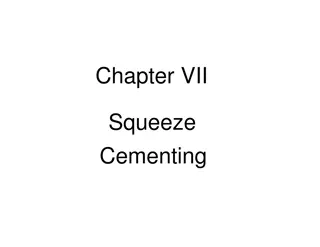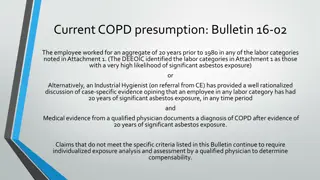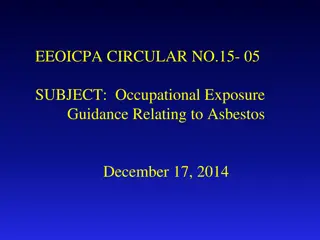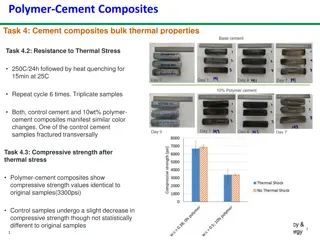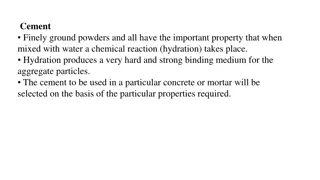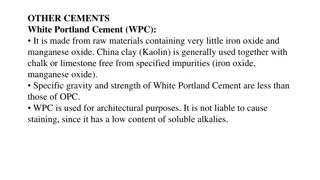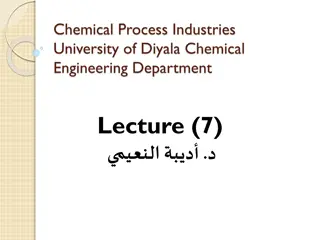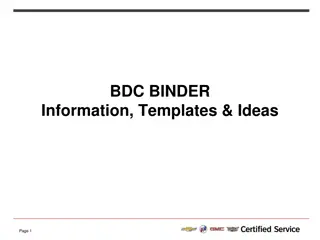Impregnation of Asbestos Cement Sheeting with Polyurethane Binder
The report discusses the successful impregnation of asbestos cement sheeting with a polyurethane binder to bond and reinforce the material. Through a method involving dye adduct formation and optimization of impregnation levels, the exposed asbestos fiber was effectively bonded. The process ensures compliance with regulations for asbestos cement products, specifically emphasizing the need for preventive measures and safe handling. The development of this impregnation technique provides a cost-effective and convenient solution for maintaining asbestos cement products.
Download Presentation

Please find below an Image/Link to download the presentation.
The content on the website is provided AS IS for your information and personal use only. It may not be sold, licensed, or shared on other websites without obtaining consent from the author. Download presentation by click this link. If you encounter any issues during the download, it is possible that the publisher has removed the file from their server.
E N D
Presentation Transcript
Treatment of Asbestos Cement Sheeting and Roof Products by Impregnation with Polyurethane Binder Introduction The original report showed that this process was possible but was difficult to demonstrate on a microscope cross section of the material because the polyurethane is a clear material. Approach A large number of indicators were examined. The requirement was a small molecular mass dye with a single reactive site on every molecule. This was reacted with a prepolymer suitable for impregnation of the cement product. It was important to produce a prepolymer with very low free isocyanate content as this could preferentially react with the dye. The prepolymer dye adduct was produced in MEK solvent. In order to prove that the dye was attached to the prepolymer, a filter paper was used for paper chromatography. The MEK separated cleanly from the dye adduct. This gave a definite line of colour showing the height of the impregnation. A separate dye line was not produced on well produced prepolymers. Following this four panels were produced with different quantities of MEK to optimise the impregnation of the panels. Results Panel 2 and 3 both produced good results of greater than 0.55mm impregnation as can be seen in the attached photos. The bristle in the photos is 0.55mm thick. The asbestos acts as a wick allowing impregnation of the panel. The bonding agent does not impregnate the cement portions without exposed asbestos fibre. The product acts as a good bonding agent.
Conclusion Impregnation of the asbestos cement sheeting has been demonstrated, and exposed fibre has been impregnated and bonded. Regulation 15: Asbestos cement sheeting and related products. Employers who work with asbestos cement products, especially roof sheets, must take steps to avoid general accidents and develop a work plan to prevent the release of asbestos into the environment. Ideally asbestos cement materials should be painted or otherwise coated to prevent release of fibre and inhibit the growth of lichen or moss. Introduction It was necessary to highlight the asbestos regulations so that attention may be drawn to certain issues. The regulation did not specify or recommend effective measures as the responsibility for the actions remained with the employer and the owner of the asbestos cement sheeting or related product. In practice this means that such parties would need to demonstrate compliance which would now be a very difficult task. For this reason many parties replaced the product with other solutions at great inconvenience and cost. We now have a product that can demonstrate that effective measures have been put into place.


